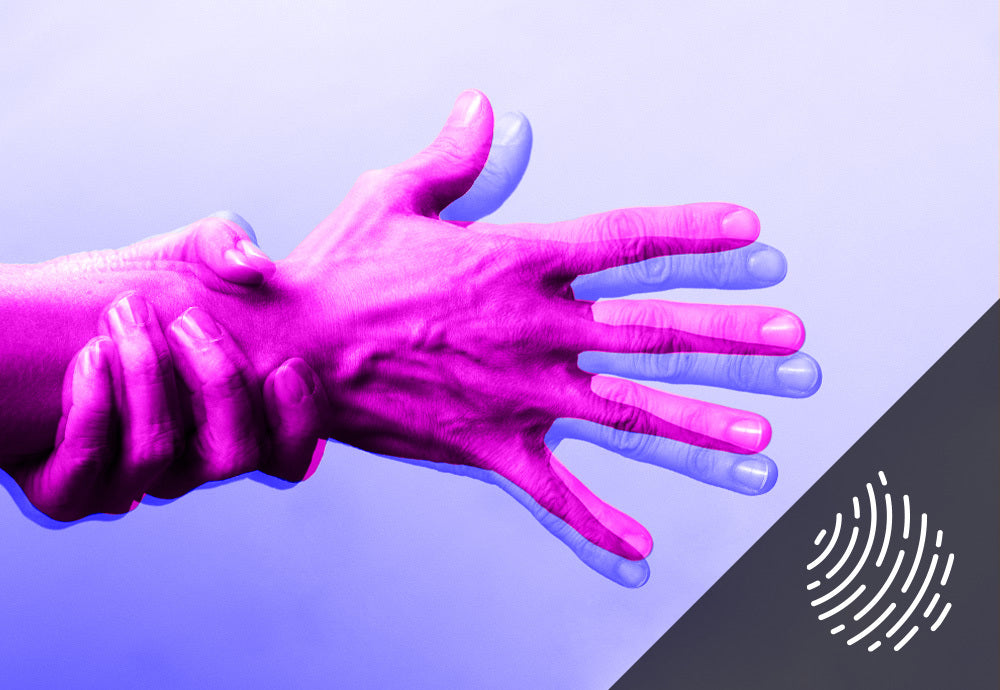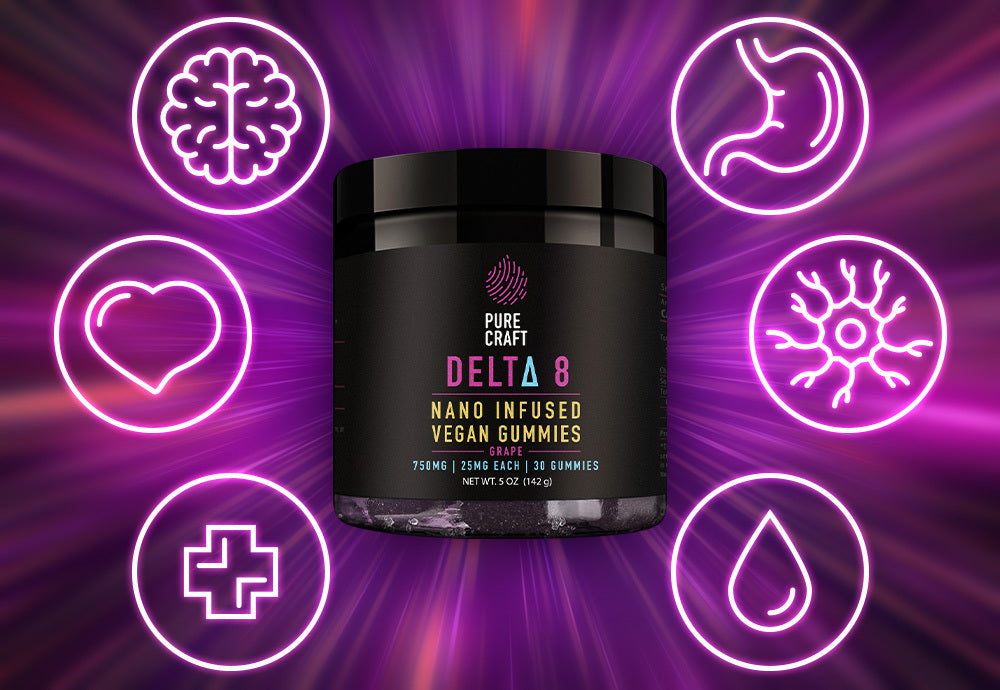Your Cart is Empty
FREE SHIPPING ON ORDERS $70+ | SATISFACTION GUARANTEED
Huh, flavonoids?
You may have heard of cannabinoids and terpenes, but you may not have known about a third super-important compound in your CBD.
Flavonoids matter because research has shown that they have a lot of potential health benefits to offer.
But — what are they, and why are they in your CBD? Let’s take a look.

Ever wonder why fruits and vegetables come in such a vivid spectrum of colors? We have flavonoids to thank for that.
Flavonoids are phytonutrients — plant compounds that are responsible for the pigmentation of fruits, vegetables, and tons of other plants! These compounds help protect plants from disease and the bright colors produced by the flavonoids attract pollinators.
Scientists have discovered around 6,000 varieties of flavonoids. Many flavonoids are specific to certain plants, while other flavonoids are found in many different plants. For example, cannflavin is only found in cannabis — whereas kaempferol is found in many plants like kale, beans, broccoli, and cannabis!
Basically, everywhere.
Flavonoids are produced by all plants. So, anything vegetal is chock-full of flavonoids. You can be sure to find them in:
Flavonoids are abundant in the natural world, and if you get your recommended dose of fruits and veggies you’re consuming a lot of ‘em.
Because flavonoids are plant compounds, humans and animals can’t produce them. But flavonoids are definitely present in fauna. Flavonoids in creatures are the ones gleaned from consuming plants.
The research on flavonoids suggests that they reduce your risk of cardiovascular problems. Foods containing flavonoids are thought to be effective in reducing high blood pressure. There’s also some evidence suggesting that flavonoids might reduce your risk of getting type 2 diabetes.
While flavonoids overall have been studied extensively, federal laws have made it difficult to study the flavonoid compounds specifically found within the cannabis plant. So, there’s still a lot more left to learn.
There are several major subcategories of flavonoids. They all have pretty similar names so it’s easy to get confused. Here’s a quick rundown on the types:
Now that you have an overview of flavonoids as a whole — let’s get into the flavonoids in CBD.
Scientists have identified more than 20 flavonoids in the cannabis plant. The most common flavonoids found include:
Cannflavins are a class of flavonoids only found in the cannabis plant. Yup, cannabis has its own unique flavonoid! Pretty cool huh?
Cannflavins were discovered in the 1980s. Researchers found that cannflavins A and B showed an anti-inflammatory effect that was a whopping 30x more powerful than aspirin — whoa!
Not much else is known about cannflavins, but scientific interest is rapidly rising.
As it’s found in many other plants, apigenin’s therapeutic potential has been well-researched, particularly in animal studies.
Some of the potential health benefits of apigenin include:
Luteolin is another flavonoid that may be found in your broad-spectrum CBD products.
Research-backed health benefits of luteolin:
Aside from many green leafy vegetables, kaempferol has been identified in cannabis. Kaempferol seems particularly beneficial in reducing the risk of many chronic diseases, particularly cancer.
Some of the health benefits reported include:
Another flavonoid often present in the cannabis plant, quercetin is known for its therapeutic potential.
Potential health effects of quercetin:
Flavonoids, terpenes, and cannabinoids are all plant compounds found in CBD products. What’s the difference?
Like terpenes, flavonoids help plants defend themselves against environmental harm, pests, diseases.
One difference is that terpenes play a bigger role in forming the aromatic character of cannabis plants, while flavonoids are in charge of the pigmentation.
Cannabinoids are a little different because they prompt more noticeable responses in your body. For example, THC is known for its psychoactive effects, and CBD is known to produce calming effects.
Research suggests that all three compounds work together to produce unique and potentially powerful health benefits. This synergistic potential is known as the entourage effect.
One of the biggest draws of broad-spectrumCBD products is that they remove the THC but keep everything else. You’re left with all the other naturally occurring compounds in your hemp-derived CBD. This includes CBD’s fellow cannabinoids along with the terpenes and flavonoids.
So, if you don’t want to miss out on potential entourage effect goodness, consider broad-spectrum CBD.
Flavonoids are important compounds found in pretty much every plant you can think of — including the cannabis plant. They’re responsible for the rich pigmentation of flowers, fruits, and vegetables. They work hard to help plants attract pollinators and defend against diseases and pests.
There’s been a lot of research into the health benefits of consuming flavonoid-rich fruits and veggies. Studies suggest that a flavonoid-rich diet lowers the risk of cancers, chronic diseases, and supports brain health.
Not as much is known about the direct effects of flavonoids found in marijuana and hemp, and this remains a key area of research to explore. More studies are needed to fully comprehend the role of flavonoids in hemp-derived CBD, but it’s thought that they work together with cannabinoids and terpenes to boost the effectiveness of each other.

The cannabis compound CBD has been popping up in Parkinson’s disease (PD) therapy and prevention conversations, propelled by success stories from p...
Read More
CBD is one of the most popular supplements on the market today. But you're a savvy consumer. You know just because something is popular doesn’t mea...
Read More
You know delta-8 as "weed-lite" or the "chillest of the cannabinoids." But what about all the potential health benefits of this unique compound? Wh...
Read More